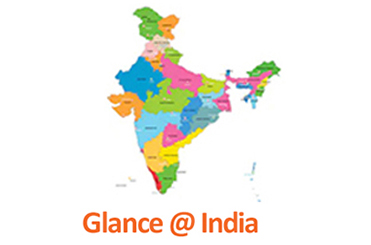- Home
- About Us
-
Consular Services
- Launch of e-Clearance for Afterlife Remains (eCARe) portal
- Instructions regarding entry into the consular Wing
- Reissue of International Driving Permit (IDP)
- General Contact details
- Postal Applications
- Visa Services
- Passport Services
- OCI Information
- Renunciation of Indian Citizenship/Surrender Certificate
- Attestation,Consular and Misc.Services
- Weekly Open House
- MADAD - Consular Services Management System
- Indian Community Welfare Fund
- FAQs on Marital disputes involving NRI/PIO spouses

- Public Notices & Circulars
-
Embassy Wings
- Economic & Commercial Wing
- Contacts
- GI Digital Catalogue

- Overview of Indian Economy
- India-Germany Economic & Commercial Relations
- Doing Business in India
- Make in India

- Invest India

- Flagship Programs of Government of India

- Doing Business in Germany
- Trade Fairs
- Trade Dispute Advisory
- Foreign Investment
- Foreign Trade
- Newsletters

- Attestation of Documents

- Community Welfare
- Culture
- Information Wing/Media Center
- Science & Technology

- Political
- Consular
- Defence Wing
- Economic & Commercial Wing
-
Media Center
- e-books

- India Perspectives

- Documentaries

- Constitution Day 2023
- Calendar of Activities
- Press Releases
- News Articles
- Constitution Day
- Flag Code of India and Prevention Insults National Honour Act, 1971
- INDIA @THE UN SECURITY COUNCIL 2021-2022
- Important statements by policy-makers in India

- Photo Gallery
- Yoga

- e-books
- India-Germany Relations
- MIIM
- Useful Links
- Tenders
The Western Traveller
|
Tuesday |
|
Tanz & Musik THE WESTERN TRAVELLER A unique music dance and multi media show by |
|
The name Rabindranath Tagore needs no introduction to anybody associated with India. The first Nobel Laureate of India, Tagore is a symbol of Bengali identity and culture. Two countries of the world use his compositions as their national songs. Tagore was foremost a poet, but he was also a gifted musician, a novelist and even a painter. His music combines Indian classical music, the ragas, with poetry to form his own unique style called Rabindra Sangeet. The performance is especially on the works of Tagore created during his trips to Germany, Czech and Hungary in 1921, 1926 and 1930. History tells the wonderful nuances the bard had at these cities- the story of the turmoil of Tagore’s encounter with Mussolini and the traumatised Gurudev seeking solace in these countries after a musical hibernation. A story that hardly anyone knows. It combines music, translated Hindi compositions in keeping with promotion of national language with narrations by Dr. Gupta, dance choreography based on yoga (a new awareness) and a mobile exhibition. All this will be enhanced by an audio visual presentation. Dr Ananda Gupta - renowned Tagore scholar, researcher, singer and Director .…………………………………………………………….. Der Name Rabindranath Tagore benötigt bei keinem Indien-Kenner eine Erklärung. Als erster Nobelpreisträger von Indien ist Tagore Symbol der Identität und Kultur Bengalens. Zwei Länder der Welt verwenden seine Kompositionen als ihre Nationalhymnen. Tagore war vor allem ein Dichter, aber er war auch ein begnadeter Musiker, Schriftsteller und Maler. Seine Musik verbindet klassische indische Musik, die Ragas, mit Poesie zu seinem eigenen Stil, genannt Rabindra Sangeet. Das Stück basiert auf den Arbeiten von Tagore, die er auf seinen Reisen nach Deutschland, Tschechien und Ungarn in den Jahren 1921, 1926 und 1930 erschuf. Das Stück erzählt die wunderbaren Nuancen der Erlebnisse Tagore’s in diesen Städten - die Geschichte von seiner Begegnung mit Mussolini und der Suche nach Trost in diesen Ländern nach einem musikalischen Winterschlaf. Eine Geschichte, die kaum jemand kennt. Das Stück verbindet Musik, mit Erzählungen von Dr. Gupta, auf Yoga basierende Tanz-Choreographien (ein neues Bewusstsein) und mit einer mobilen Ausstellung. All dies wird durch eine Audio-visuelle Präsentation untermalt werden. Dr Ananda Gupta – bekannter Tagore-Gelehrter, Forscher, Sänger und Direktor
|
||
|
Embassy of India |
Entrance with valid ID card or passport only. |
|



























